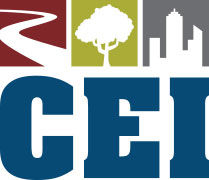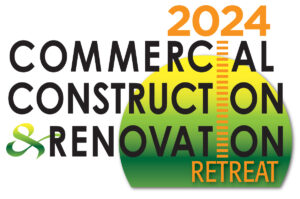As an automotive journalist immersed in Georgia’s dynamic vehicle market, I’ve had the privilege of documenting the remarkable transformation of our nation’s automotive landscape through the lens of American salvage car imports. Over the past five years, this phenomenon has evolved from a niche market into a sophisticated ecosystem that has fundamentally altered how Georgians approach vehicle ownership. Today, I’ll share my analytical insights into this fascinating market evolution.
The Socioeconomic Paradigm of Salvage Cars in Georgia
The proliferation of salvage vehicles in Georgia represents more than mere economic pragmatism; it embodies a complex interplay of social, economic, and cultural factors that have coalesced to create exceptional market conditions. Through my extensive field research and countless interviews with market participants, I’ve observed how salvage vehicles have become deeply embedded in Georgia’s automotive zeitgeist.
The phenomenon transcends simple cost considerations, though these certainly play a pivotal role. Georgia’s emerging middle class harbors sophisticated automotive aspirations but faces significant financial constraints in realizing them. This demographic disconnect has catalyzed a remarkable market response: the widespread adoption of salvage vehicles as a means of accessing premium automobiles. The intellectual capacity of our mechanics, combined with their innovative approach to vehicle restoration, has transformed what might be considered a compromise into a point of pride.
The American Salvage Market: A Critical Analysis
The United States presents a uniquely advantageous source for salvage vehicles, distinguished by several critical factors that I’ve identified through years of market analysis. American salvage vehicles often bear insurance write-offs for relatively minor damage, presenting excellent restoration candidates for the Georgian market. The stringent documentation requirements and transparent auction processes characteristic of the American market provide an additional layer of security for Georgian buyers.
My research has revealed a fascinating dichotomy: while American insurance companies may declare vehicles salvage for economically rational reasons within their market context, these same vehicles often represent excellent value propositions in the Georgian market, where labor costs and restoration expertise create different economic parameters.
Contemporary Import Mechanisms and Market Infrastructure
The evolution of import processes has been particularly fascinating to observe from my vantage point in the industry. The market has developed sophisticated mechanisms for vehicle acquisition and importation, with several key players emerging to facilitate these transactions. Among these, AutoBidMaster has distinguished itself as a leading platform for salvage car auctions in the United States. Their recent expansion into Canada, while maintaining strong operations in the USA, has further solidified their position in the market. Georgian buyers can access their extensive inventory and services through their platform at https://www.autobidmaster.com/ka/
The import process has been refined through years of market evolution, transforming what was once a complex logistical challenge into a relatively streamlined operation. The journey typically encompasses several phases: vehicle selection through online auction platforms, domestic transportation within the United States, international shipping, and finally, customs clearance in Georgia. This process, while still complex, has become increasingly efficient through the development of specialized service providers and improved digital platforms.
Economic Analysis and Market Dynamics
The financial dynamics of salvage vehicle importation present a compelling case study in market efficiency. Through my analysis of numerous transactions over the past five years, I’ve documented consistent cost advantages even after accounting for all associated expenses. The total cost structure typically encompasses the initial purchase price, shipping expenses, customs duties, and restoration costs. Yet, even with these cumulative expenses, the final investment often represents a 30-50% reduction compared to equivalent vehicles in the Georgian market.
This economic advantage has catalyzed the development of a sophisticated support infrastructure. Local mechanics have evolved from general practitioners to specialists in American vehicle restoration, developing proprietary techniques and accumulating invaluable expertise. Parts suppliers have established efficient supply chains, and specialized financing solutions have emerged to support these transactions.
Technological Integration and Market Evolution
The technological aspects of this market evolution merit particular attention. The integration of digital platforms has transformed how Georgian buyers interact with the American salvage market. Real-time auction participation, comprehensive vehicle documentation, and sophisticated damage assessment tools have reduced information asymmetry and improved market efficiency.
Perhaps more significantly, the technological sophistication of American vehicles, even in salvage condition, has contributed to their appeal in the Georgian market. Modern safety systems, advanced powertrains, and sophisticated electronics, once restored to functionality, provide Georgian consumers access to automotive technology that might otherwise be financially unattainable.
Market Trajectory and Future Implications
The forward trajectory of this market presents intriguing possibilities. The infrastructure supporting salvage vehicle importation has achieved a level of maturity that suggests continued market growth. The accumulation of expertise among importers, mechanics, and support services has created substantial barriers to entry, potentially leading to market consolidation among more sophisticated operators.
The environmental implications of this market also warrant consideration. While the restoration of salvage vehicles might appear counterintuitive from an environmental perspective, it represents a form of automotive recycling that extends vehicle lifecycles and potentially reduces overall resource consumption.
Conclusion
The American salvage vehicle market’s integration into Georgia’s automotive landscape represents a fascinating example of market evolution and adaptation. Through five years of close observation and analysis, I’ve witnessed the transformation of what began as an opportunistic response to market conditions into a sophisticated and efficient system for vehicle acquisition and restoration.
The market’s maturation has created opportunities for consumers while fostering the development of specialized technical expertise and support services. As we look toward the future, the continued evolution of this market will likely yield further refinements in processes and services, potentially serving as a model for other emerging markets facing similar automotive accessibility challenges.
The success of this market adaptation suggests broader implications for how emerging economies might approach vehicle accessibility and market development. As the market continues to evolve, it will be fascinating to observe how it addresses future challenges and opportunities in Georgia’s dynamic automotive landscape.








 The 2024 virtual Men’s Round Table will be held Q4, 2024, date TBD.
The 2024 virtual Men’s Round Table will be held Q4, 2024, date TBD.













